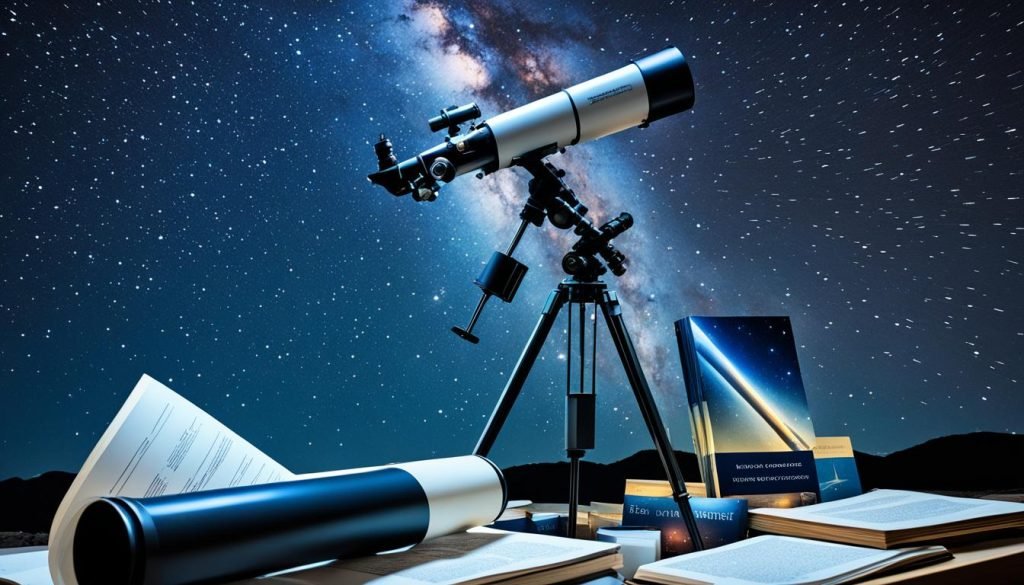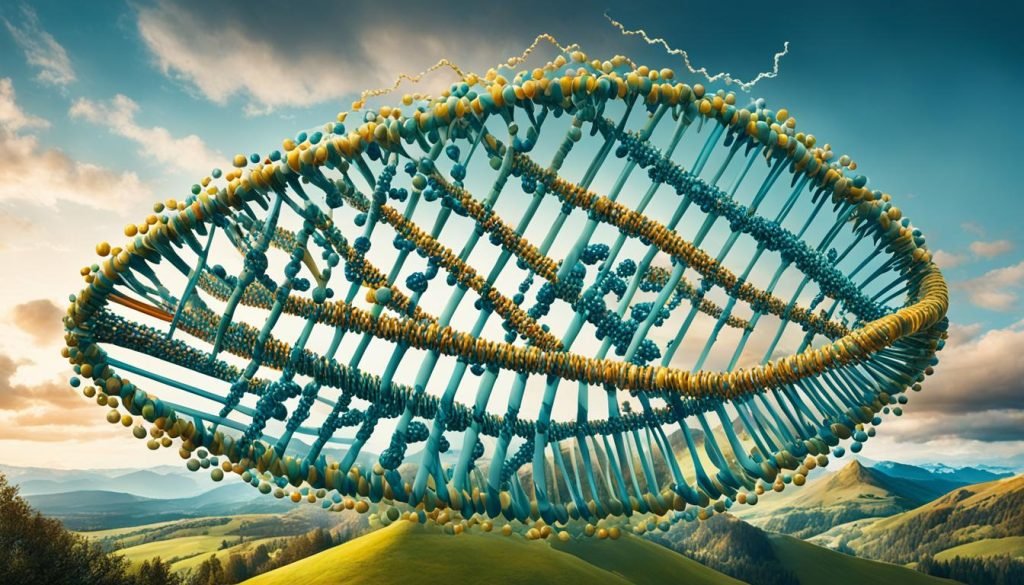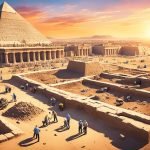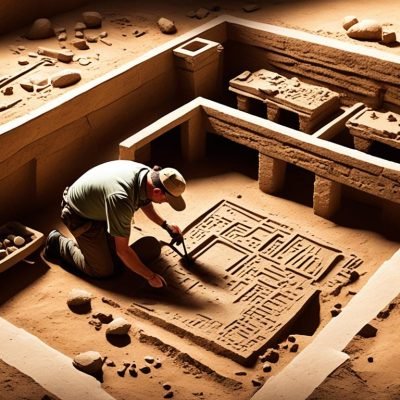The journey through human history is filled with discoveries that changed how we see ourselves and the world. These findings have been key to building our knowledge. They show how history has shaped our society and helped us understand our existence better.
Advances in archaeology, astronomy, DNA research, germ theory, and understanding electricity have changed our view of human progress. They’ve shown us how we’ve adapted and grown over time.
Key Takeaways
- Revolutionary historical findings have significantly shifted our understanding of societal progress.
- Discoveries in archaeology have unearthed critical insights into ancient civilizations.
- Astronomical advancements have reshaped our perspective of the universe.
- The exploration of DNA has opened new avenues in genetics and heredity.
- Germ theory revolutionized medicine and public health practices.
- Electricity’s discovery transformed everyday life and technological advancement.
The Concept of Revolutionary Historical Findings
Revolutionary findings change how we see history. They often challenge what we thought we knew. This comes from fields like archaeology, where old artifacts tell us about past civilizations.
Thanks to science, we can now uncover more about the past. These discoveries change how we view history. They show us the depth and complexity of past events.
Researchers keep digging into human history. Revolutionary findings push us to question our old stories. They help us understand our past better and our place in the world.
Significant Historical Revelations in Archaeology
Archaeology opens a window to our past, giving us deep insights. It shows us what ancient civilizations were like. We learn about their societies, beliefs, and everyday lives through artifacts and structures found.
Stonehenge is a site that still puzzles us today. Despite lots of research, we don’t know how it started or why it was built. The huge stones in a circle make us wonder about ancient engineering and spiritual beliefs.
The discovery of Tutankhamun’s tomb in Egypt was another big find. It showed us the luxury and culture of ancient Egypt. The many artifacts found helped us understand the lives of people long past.
Archaeologists keep making new discoveries that connect us to the past. Their work shows why it’s important to save and learn from our archaeological heritage.
Groundbreaking Historical Research in Astronomy
Astronomy has seen big changes thanks to groundbreaking research. The heliocentric theory is a key example. Nicolaus Copernicus introduced it in the 16th century. This theory changed our view of the universe by placing the sun at its center.
Before, people thought Earth was at the center. This new idea was a big shift.
Heliocentric Theory and Its Impact
This new idea led to many new discoveries. It made people question old beliefs, promoting the scientific method. This change helped us understand how planets move.
It also helped future astronomers. They could use these ideas to learn more.
Galileo’s Contributions and Discoveries
Galileo Galilei took these ideas further. He used a telescope to make important discoveries. He saw moons around Jupiter and phases of Venus, proving the heliocentric theory right.

Galileo’s work changed astronomy and sparked debates. He showed the power of observation. His work helped start modern science.
| Contribution | Impact |
|---|---|
| Heliocentric Theory | Revolutionized our understanding of the solar system |
| Galileo’s Telescopic Discoveries | Provided empirical evidence supporting heliocentrism |
| Advocacy for Scientific Inquiry | Encouraged questioning of traditional beliefs |
Innovative Historical Exploration of DNA
The search to understand genetic material has changed a lot over time. It started with Friedrich Miescher’s discovery of nuclein in 1869. This discovery led to a deep dive into the world of genetics.
Since then, scientists have made many important discoveries about DNA. These findings have shown us how complex DNA is. They have shaped our understanding of genetics today.
The Journey from Nuclein to DNA Discovery
The shift from calling it nuclein to DNA was a big step in genetics. Scientists used Miescher’s early work to learn more about DNA’s structure and role. This change helped us see the complex nature of cells.
It also set the stage for more research and discovery.
The Double Helix Structure: Watson, Crick, and Franklin
In the 1950s, James Watson and Francis Crick discovered the double helix structure of DNA. This was a huge breakthrough. But we can’t forget Rosalind Franklin’s role in it.
Her work with X-ray crystallography was key to understanding DNA. The discovery of DNA’s structure has changed many fields, including medicine and forensics.

Understanding Germ Theory: A Pivotal Historical Breakthrough
The journey to understand germ theory was a major leap in medicine. It changed how we view health and disease prevention. It was led by two key figures who changed medical practices for good.
Louis Pasteur’s Role in the Development of Germ Theory
In the 19th century, Louis Pasteur showed that tiny organisms cause fermentation and disease. His work was key to germ theory, proving that we can kill harmful pathogens with pasteurization. This led to better health and safer food.
Pasteur’s findings were a big step in understanding infectious diseases. They helped guide further research and progress.
Koch’s Postulates and Their Impact on Medicine
Robert Koch built on Pasteur’s work by creating Koch’s postulates. These rules helped scientists find the microorganisms that cause diseases. Koch’s work was a big boost to understanding infectious diseases.
Together with Pasteur, their discoveries led to better hygiene, vaccines, and health policies.
| Discoveries | Pasteur | Koch |
|---|---|---|
| Methodology | Pasteurization | Koch’s Postulates |
| Focus Area | Microorganisms in food and environment | Identifying disease agents |
| Impact | Food safety and public health | Infection control and hygiene |
| Influence | Vaccination development | Advancements in microbiology |
Electricity: A Revolutionary Historical Finding
The story of electricity is long and fascinating, starting with ancient thinkers. Thales of Miletus first noticed amber’s strange behavior when rubbed. Later, Benjamin Franklin’s kite experiment in the 18th century showed us how electricity works.
Over time, revolutionary findings in physics changed everything. Alessandro Volta created the battery, making electricity steady. Michael Faraday then discovered electromagnetic induction. These discoveries changed technology and our lives.
Electricity’s impact was huge. It sped up industry, changed communication with the telegraph, and made many devices work. Cities lit up, and machines started to move, making electricity key to our modern world.
| Historical Figure | Contribution | Time Period |
|---|---|---|
| Thales of Miletus | Discovered static electricity from amber | c. 600 B.C.E. |
| Benjamin Franklin | Kite experiment, established concept of electrical charge | 1752 |
| Alessandro Volta | Invention of the battery | 1800 |
| Michael Faraday | Electromagnetic induction theory | 1831 |
Conclusion
Exploring historical discoveries shows us a world full of new ideas. These discoveries change how we see the world. They come from archaeology, DNA research, and astronomy, among other areas.
These findings greatly change our view of history. They help us understand the past better. This is thanks to science and history working together.
Looking back, we see these discoveries as key moments in history. People like Louis Pasteur and Galileo Galilei have left a mark that lasts. Their work shows us the ongoing quest for knowledge.
This shows us how history and science are connected. It also highlights the ongoing progress in understanding our heritage.
The impact of these discoveries goes beyond what we first thought. They set the stage for more research and discoveries. This keeps our understanding of history evolving.
Our search for knowledge never stops. Each new discovery helps us see the past more clearly. This shapes our future in amazing ways.





